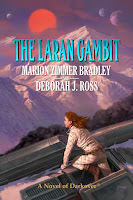Deborah J. Ross's Blog, page 14
December 29, 2023
Short Book Reviews: A Deliciously Bizarre and Terrifying Dystopic Medical Thriller
Leech, by Hiron Ennes (Tordotcom)
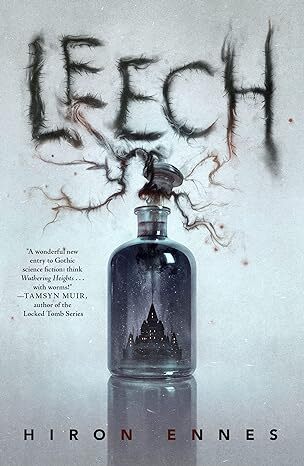
I should preface my review with the confession that althoughI don’t read a lot of horror, this novel captured my imagination and kept mestaying up way too late, turning the pages. It straddles the boundary betweenscience fiction and horror, with a nod to thriller pacing and suggestions offantastical elements. In a far, but not too far, dystopic future, Earth isbarely recognizable. Upheavals have overturned the layers of crust, so that thesurface is all but barren. Humans must mine the caverns for wheatrockfoodstock. Winters are bitterly cold and getting worse. Even so, settlementspersist. One such is an estate ruled by a grossly obese baron who relies onsophisticated machinery to stay alive. When his doctor dies, he sends to theelite Interprovincial Medical Institute for a replacement (the narrator). Butthis is no simple matter of sending another graduate of the same school. Thenameless narrator shares consciousness, knowledge, and memories with everyother graduate. In fact, they are all human hosts for a single, telepathic parasite.
As if that weren’t bizarre enough, the cause of death of theformer physician turns out to be a second parasite arising deep in thecaverns. It’s not only deadly, it’s incredibly difficult to kill, and it’sspreading from one host to the next like wildfire.
I loved the medical neepery, the skillful way the authorintroduced the characters and plot elements, the rocketship ride of dramatictension, and the wildly inventive world-building.
Content warning for violence, gore, mental rape, and a fewother horrors. The book might be too nightmarish for some readers.
December 22, 2023
Short Book Reviews: An 18th Century Astronomer
An Astronomer in Love, by Antoine Laurain (GallicBooks)

I loved this combination of the historical adventures of the18th Century French astronomer, Guillaume Le Gentil de la Galaisière,and a modern-day love story. Le Gentil was part of an international effort (proposedby none other than Edmond Halley of Halley’s Comet) to measure the distance tothe Sun, by observing the transit ofVenus at different points on the Earth and triangulating thedistance. The transit of Venus occurs when Venus passes between the Earth andthe Sun and can be visualized against the brightness of the Sun. (I wasfortunate enough to view this in 2012, using proper eye protection, of course.)Le Gentil’s expedition was a saga of onedisaster after another, including his ship being blown off-course (for the 1761transit), after which he remained in India for 8 more years until overcastweather made observation of the 1769 transit impossible. By the time hereturned to Paris, everyone believed he was dead, and he had quite a timerecovering his property and position.
Two and a half centuries later, Parisian realtor XavierLemercier chances upon Guillaume’s telescope. It’s turned up in a locked closetin an apartment he had once sold, and the new owner wants nothing to do withit. When Xavier sets it up, he inadvertently spies the apartment across theway, inhabited by a zebra (taxidermied, he later finds out) and a beautifulwoman. She walks into his office, much to his surprise, in search of new digs.In the process, romance blossoms, aided by their children, who have become bestfriends. Now he has to find a way to confess that he was spying on her withoutthe whole affair blowing up.
The two stories alternate in an interwoven pattern as Xavierdiscovers the telescope and becomes intrigued by Guillaume’s story. Guillaume’sadventures are dramatic enough to fill volumes and he was apparently a prolificdiarist. I like to think that if they ever met, they would have appreciated oneanother.
December 18, 2023
[shameless promotion] Another Five-Star Review of The Laran Gambit
December 15, 2023
Short Book Reviews: The Latest "October Daye" Adventure
Be the Serpent, by Seanan McGuire (DAW)
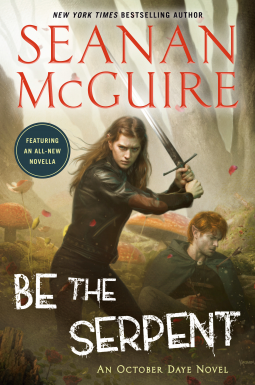
I’ve loved Seanan McGuire’s “October Daye” urban fantasysince the very first volume and looked forward to each new installment. Bethe Serpent is every bit a treat for long-time fans of the series. It isnot, alas, an entry point for the new reader. Long-running series are oftenburdened by sheer weight of backstory. McGuire is skillful enough to weave in bare-minimumnecessary details, but after 15 previous volumes, that amounts to a lot.Even though I had read all the previous volumes, some more than once, I foundmyself wondering who is this person and when did thathappen? I wished for a “refresh my memory” synopsis from time to time,especially when supporting characters had similar names (like Simon andSylvester, although there aren’t enough letters in the alphabet to giveeveryone in Toby Daye’s world a name starting with a different letter). I havethe greatest sympathy for the poor, unsuspecting reader who tries to jump intothe middle of the story. To be fair, there are plot elements that don’t depend onan encyclopedic knowledge of What Has Come Before and are engrossing in theirown right.
Be the Serpent has the same delicious blend ofFaerie, magic, romance, mystery, and action, not to mention great characters,as has come before. Fans will love it, me among them. If I was disappointed byonce-terror-inspiring characters descending to warm-fuzziness, the switch fromBFF to arch-enemy more than balanced it out.
The story ends on a partial resolution, a false cadence asit were, promising that the story isn’t over yet. This is great news for fans,maybe not so much for someone still trying to figure out what’s going on.
I tried to read the attached novella, but I kept fallingasleep.
December 8, 2023
Short Book Reviews: A Domestic Haunted House Thriller
Just Like Home, by Sarah Gailey (Tor)

Oh, my.
I fell in love with Sarah Gailey ‘s writing when Magicfor Liars hit the stands, and I becameeven more a fan with her tale of hippopotami in the Mississippi River (Riverof Teeth). Her domestic thriller, The Echo Wife, took herstorytelling into new territory and new heights. Now Just Like Homeunveils her mature talent. It fits loosely within the new genre of “domesticthriller,” more toward the “domestic horror” side with supernatural elements.
Vera Crowder returns home at the summons of her dyingmother, from whom she has been long estranged. She does so reluctantly, becauseher house--the notorious Crowder House, hand-built by her father—was the sceneof serial murders. The town isn’t exactly thrilled to have Vera back. Questionslike “Did you know what was going on?” still haunt her. To make matters worse,her father and the house have become the object of true-crime fans, and the sonof a journalist who helped to publicize it has become the mother’s caretaker (andheir) and is busy stripping the house for his “murder art pieces.” As Verasorts her mother’s belongings, the memories she has long suppressed come tolife, along with disastrous truths.
I won’t say more about what those truths are because theprocess of revealing them is one of the ways this book is brilliant. Vera is anunreliable narrator who hides horrific childhood memories from herself, but sheherself is not the person initially presented. Nor are her parents. Byalternating between past and present, Gailey takes us on an ever-tighteningspiral path, each revolution bringing more and deeper connections. The finalconfrontation and resolution, which would otherwise have come as a surprise—notto mention being utterly unbelievable—proceeds inevitably and naturally fromwhat has come before. It’s a masterful handling of darkly gothic elements,psychopathy, domestic terror, and gorgeously bizarre characters.
Gailey is a writer who has come of age and richly deservesthe acclaim she’s earned.
December 4, 2023
A Month of NaNoWriMo posts (highlights)
 I've been putting up brief posts about National Novel Writing Month. Here are a few that are worth repeating.
I've been putting up brief posts about National Novel Writing Month. Here are a few that are worth repeating.
November 1: Happy November! It's @NaNoWriMo time! Willyou join this year?
NaNoWriMo is ayearly event that challenges participants to write a novel in a single month.The #writingcommunity spirit, online tools, and generalcheering one another on can be awesome. But it's not for everyone.
Here's what I'll bedoing for NaNoWriMo: Cheering on my friends. I'll be finishing up revisions onthe next Darkover novel, Arilinn. Revising is a very different process fromdrafting. I find that drafting goes better when I do it quickly, so I don't getcaught in second-guessing myself or editing as I write. Both are recipes fordisaster and paralysis. Revising, on the other hand, does not reliably produceany measurable result in terms of pages or words. I dive into it and call itquits every day when my brain won't function any longer.
November 2: Happy @NaNoWriMo month!Whether you participate or not, this is a great time to review your writinggoals. If finishing a novel is too much, how about a single chapter? Or a shortstory? While it can be helpful to set ambitious goals, for many it's overwhelming.We fare better with short, manageable goals that allow us to succeed, sentenceby sentence, word by word. What are YOUR goals for this month?
November 3: Happy @NaNoWriMo!Candles, music, hot drinks, snacks, a purring cat on your lap... What helpsmake the words flow for you?
I like soft instrumental music, anoccasional spearmint candy, and lots of kitty vibes!
November 5: Happy @NaNoWriMo! Is itpossible to write a novel in only 30 days? What do you think?
1. Why stop at only one? Let's write atrilogy in 30 days?2. Hell, no! I can barely manage asentence in that time--but it's a perfect sentence!3. Yes, if the voices in my head keepdictating to me.November 10: It's time for a break!Rest is important – even during @NaNoWriMo. Writing a novel in 30 days ispretty intense. Knowing when and how much to rest is tricky. Are you a fan ofrest or do you find it difficult to switch off?
November 12: Supporting characters can provide comic reliefwhen things get heavy. Do you have a favorite, one just begging for their ownstory What would a writing session look like if some of your supportingcharacters were keeping you company?
November 13: Doing something as demanding as @NaNoWriMo canteach you things you didn’t know about yourself. Tackling a novel, regardlessof time, teaches me humility and patience. And that I have a wacky sense ofhumor. Does this surprise you? What are you learning about yourself this month?
November 15: During a project as big as @NaNoWriMo, it’snormal to feel tired, to doubt yourself or run low on creativity. So it’s goodto have a few go-to accounts that lift you up, brighten your day or remind youwhy you’re doing what you’re doing. What nourishes you during those moments?What keeps you inspired?
November 26: @NaNoWriMo pals: Are youold school or ultra-modern? Whether it’s keeping track of your ideas, stayingon schedule or actually putting words on the page – do you prefer pen andpaper, your trusty typewriter, color-coded post-its, a giant whiteboard, cleverapps... or something else? Ask your readers: are you traditional or high-tech?
For organization, I use a writingpaper schedule and a spiral notebook for each novel. For writing, I mostly useWord (or Google Docs), but if I'm stuck, I write my way through with that handynotebook.
What about you?
November 27: Into the home stretch of@NaNoWriMo, there’s a good chance you’ll run low on energy at some point thismonth. When that happens, do you take a break or push through? What restoresyour energy and momentum?
November 30: On the last day of @NaNoWriMo, you mayneed a little extra help to get across the finish line. Feel free to be honestabout that and ask for #encouragement.
Here's some from me: You've done an awesome job, whetheryou finished a novel or not. Your words are precious, so keep writing!
December 1, 2023
Short Book Reviews: Walter Jon Williams's "Praxis" Homerun
Imperium Restored (A Novel of the Praxis), by WalterJon Williams (Harper Voyager)
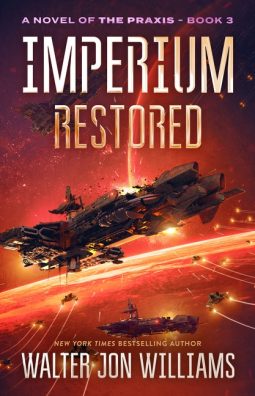
This was my first “Praxis” novel, and it’s a tribute to theauthor that although I could not always follow the intricacies of the backstory,I was so caught up in the action that I simply didn’t care. ImperiumRestored works on so many levels, each of them fascinating. Star-crossedlovers are separated by a colossal misunderstanding that spews forth confusion,mistrust, and crushing hurt (but does nothing to erase the fundamentalattraction between them). There’s also a bang-up battle in space, one of thesmartest and most inventive I’ve read, enough to convince me that any spacemilscience fiction Williams writes will be superb. Life in a vast star-spanningspaceforce is filled with rivalries, jealousies, boredom, ill-fated sexualencounters, interspecies friction, and what-do-we-do-with-ourselves once thewar is over. A lesser writer might have focused on the war itself. While the battlescenes are pure bravura, Williams keeps enlarging the lens to look at theramifications, not just during the conflict but also afterward. The resultingpeace offers as many opportunities for tension, betrayal, alliances made andbroken, assassination attempts, revenge, and general chaos as the actualfighting did.
There’s also a mystery.
What more could a science fiction fan want?
November 27, 2023
GUEST POST: Lillian Csernica on Finding Happiness in Writing
I’m delighted to welcome author Lillian Csernica, who writeseloquently from the heart about her life. She says the following essay “embodiesthe main theme of my NaNoWriMo project, Keep Getting Up.”
HAPPINESS: A WELCOMESTRANGER
By Lillian Csernica
If you ask me where I make room for my happiness, it willtake me a minute or two to come up with a reply. Not because I don't know whereI keep it, but because in a very real sense, I don't have any to keep. I livewith Major Depressive Disorder. It's not like I get depressed every now andthen. I'm depressed all the time. I have to fight my way out of it to a stateof mind that approximates the kind of baseline cheerfulness that gets mostpeople through their day. The specific name for the no-happiness part of mycondition is anhedonia. That's the inability to experience pleasure from normalactivities such as watching a funny movie or playing with a pet. If that soundssad, it is. Some days it goes beyond sad all the way into tragic. I sit thereand watch life go by. I can see the colors and hear the sounds, but I can'tfeel anything other than depression. The tastes, the smells, the textures arethere but they don't connect to the pleasure center in my brain.
I've had to actively seek out qualified people who taught methe skills I need to change my perceptions and reframe my thinking. I might notbe able to feel happiness, but I take great pleasure in other people's joy.Here are two examples:
My son John just finished taking a class at the library onusing a digital camera and laptop to make movies. He learned how to use somenew software and do some interesting things with the storyboard pages he'dspent so much time drawing. John doesn't have a completed animation projectyet, but he did master a new part of the process in just one hour. I put theexperience in context for him, explaining how the animators he admires had tolearn step-by-step methods as well. John is proud of himself.Michael, my older son, just brought home his latestaward-winning art project. He and his aide had kept it in his classroom untilsummer school ended because it's a triptych with two of the panels created bytwo of Michael's classmates. It shows a street scene right off the beach inCapitola, done in multimedia that includes paint and crayon and some glitter.While Michael didn't make it into the Top Three for this year's school districtart contest, he and his team received ribbons for Awards of Merit. All of us athome made much over Michael winning his fourth award for an art project.I think I'm the closest to real happiness that I can getthese days when I write. When I get into the creative trance, all sense of timepassing vanishes. I leave behind the sorrows of the real world and functionwithin the world of my story. I am on that intuitive wavelength where I'mprocessing structure and characterization and setting and dialogue all the waydown to the microwriting level of word choice and punctuation placement. Icould be a gem cutter working with the magnifiers and the precision tools thatallow me to cut a stone into a solitaire, a baguette, a marquise, whatever bestsuits the particular gem. I reach into the story itself for its reality, itsshape, the right way to show off its color, cut, and clarity. There is nopleasure like the pleasure of finding the exact word and putting it in theideal setting.
I have to work hard at making room for happiness in my mindand in my life. Every day I have to survive in an environment of ongoingtragedy, knowing that because of their disabilities, both of my sons will notenjoy everything life has to offer them. I've learned that I can't hold on tohappiness. Life changes too quickly, and some of the changes are permanent.I've learned that I have to take medication to correct my brain chemistry so Ican get out of bed in the morning and get through the demands of each day. I'velearned that I can't let my mental and emotional room be taken up by negativefeelings and old baggage. Most of all, I've learned that if I just keep stilland be in this present moment, happiness will wave at me or throw me a smile.Once in a while, it will even come and sit beside me so we can share themoment.
 Lillian Csernica writes fantasy, romance, and horror. Hershort stories have appeared in Weird Tales, Fantastic Stories, and Jewels ofDarkover. Her Kyoto Steampunk short stories can be found in the ClockworkAlchemy anthologies Twelve Hours Later, Thirty Days Later, Some Time Later and Next Stop On The #13. SHIP OF DREAMS, an historical romance, is set in the Caribbean of 1725during the Golden Age of piracy. A genuine California native born in San Diego,Lillian resides in the Santa Cruz mountains with her two sons and three cats.Visit her at lillian888.wordpress.com.
Lillian Csernica writes fantasy, romance, and horror. Hershort stories have appeared in Weird Tales, Fantastic Stories, and Jewels ofDarkover. Her Kyoto Steampunk short stories can be found in the ClockworkAlchemy anthologies Twelve Hours Later, Thirty Days Later, Some Time Later and Next Stop On The #13. SHIP OF DREAMS, an historical romance, is set in the Caribbean of 1725during the Golden Age of piracy. A genuine California native born in San Diego,Lillian resides in the Santa Cruz mountains with her two sons and three cats.Visit her at lillian888.wordpress.com.
November 24, 2023
Book Review: Mothtown, A Brilliant Second Novel from Caroline Hardaker
Mothtown, by Caroline Hardaker (Angry Robot)
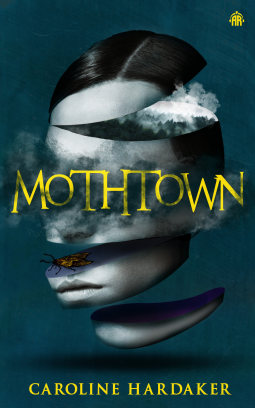
Caroline Hardaker’s second novel, like the first, presents achallenging read. It asks the reader to keep critical faculties, humansympathy, and a healthy degree of scientific skepticism onboard as the storyunfolds. It’s been described as a cross between horror and mainstream, but Idon’t think it’s horror in the usual sense, any more than Metamorphosisby Franz Kafka is. It might better be described as a psychological mystery.Whether the fantasy/science-fictional/surreal elements truly exist inHardaker’s world or whether they are creations in the mind of the maincharacter is, ultimately, a judgment call for the reader to make.
The story alternates between “After,” in which the adultprotagonist races desperately through a sinister wilderness, and “Before,”looking back to his childhood. The “Before” section opens on an apparentlydystopic world in which people go missing and floral tributes appear onall-too-many doorsteps and street corners. This is the first part of themystery: What is going on? Are people really vanishing? If so, where arethey going? If not, where are their bodies?
Although his parents try hard to protect him and his sister,ten-year-old David believes something more is going on. When his belovedgrandfather--a Professor of Superstring Theory and Dark Matter Studies--disappearsand his parents insist the old man is dead, David refuses to believe them. Hebecomes convinced that his grandfather has found a door into another world,a place he truly belongs. And David is determined to find such a world forhimself.
David faces many difficulties in the ordinary world. He’sbarely verbal, doesn’t pick up on social cues or interact with others, andseems oblivious to the feelings of others. His mother’s increasingly anxiousabout the “disappearances,” and despite this, David takes off on his own tovisit the cemetery where his grandfather is buried. As a mother myself, I wasfurious at his lack of sensitivity. Fortunately, Hardaker’s skill kept me readinglong enough to ask the question, “What is going on with this kid?”
David is more than an unreliable narrator, although he isthat, too, and herein lies the second part of the mystery. What, indeed, is goingon with him? Can we trust anything he says about himself, the world, othercharacters, his grandfather—anything?
Can we read between and behind the lines to discover thereal story?
==SPOILER ALERT==
About the time I was incensed with David’s insensitivity, Istarted noticing clues in his behavior, thoughts, and perceptions. At first,these clues were subtle and David didn’t seem all that different from any othershy, introverted child “on the spectrum.” Combining this with the half-truthsand outright lies parents often tell their children under the pretext of“protecting them,” and the question of whether people are truly disappearingbecomes even fuzzier. Early in the book, there’s a news report of the discoveryof the bodies of twelve people who were reported missing, found on amountainside with “unidentifiable scientific apparatus,” suggesting they wereon the hunt for a “door,” and more references later. David’s “mudmen,” whom hebelieves to be on the brink of disappearance, could just as easily be ordinarystrangers, disaffected and depressed by the “Modern Problem.” His grandfather’sseminal work, Hidden Worlds, which David takes as a roadmap, has beendismissed by his scientific colleagues as nonsense. As I went on, I began to question whether whatDavid reported was indeed what was objectively true.
There’s a time jump to David as a young adult in hismid-20s. At first, it seems he is functioning better. He has a job and agirlfriend, even if he’s broken ties with his family, including the sister heonce adored. But as new clues emerged, I came to question that picture. Hewatches his girlfriend in the shop across the street but never speaks to her,even about his desire to “go home.” I noticed instances of paranoid ideation, socialisolation, and dissociation. Then, as David comes under the sway of an outrightcult and decompensates progressively, malnutrition, self-harm, stealing,obsessive/compulsive behavior, and outright delusions became more and moreprominent. For example, it turns out that not only is the girl not hisgirlfriend, but she’s taken out a restraining order against him. He walks awayfrom his job, becomes progressively weaker as he starves, and lives in uttersqualor, in a “cocoon” he’s constructed from materials stolen and scrounged,cemented together with his own blood. In the end, there was no doubt in my mind what was going on. I was glad that his family does an intervention to gethim into treatment and that there are hints he is at last willing to starttalking.
I found the conclusion not only highly satisfying but filledwith hope.
November 20, 2023
New Evidence on How the Dinosaurs Died
Such a cool article from Universe Today, I think it merits a post all to itself!
When a giant meteor crashed into Earth 66 million years ago, the impact pulverized cubic kilometers of rock and blasted the dust and debris into the Earth’s atmosphere. It was previously believed that sulfur from the impact and soot from the global fires that followed drove a global “impact winter” that killed off 75% of species on Earth, including the dinosaurs.
A new geology paper says that the die-off was additionally fueled by ultrafine dust created by the impact which filled the atmosphere and blocked sunlight for as long as 15 years. Plants were unable to photosynthesize and global temperatures were lowered by 15 degrees C (59 F).
Most scientists agree the disaster started with an asteroid impact, where an asteroid at least 10 kilometers wide struck the Chicxulub region in the present-day Yucatán Peninsula in Mexico. The impact released 2 million times more energy than the most powerful nuclear bomb ever detonated.
The devastation created layer of ash sandwiched between layers of rock, known as the Cretaceous-Paleogene (K–Pg) boundary, formerly known as the Cretaceous–Tertiary (K-T) boundary, which is found across the world in the geologic record. It includes a layer of iridium, an element common in asteroids but rare on Earth. It was this ‘iridium anomaly’ that first revealed the extinction event as an asteroid strike to geologists more than three decades ago.
What has been debated is what created conditions for the post-impact winter. The leading candidates were sulphur from the asteroid’s impact, or soot from global wildfires that ensued after the impact. Both would have blocked out sunlight and plunged the world into a long, dark winter, collapsing the food chain and creating a chain reaction of extinctions.
 Overview of the Cretaceous-Paleogene boundary in North Dakota (USA). The sediments indicate a river and swamp-like environment at the end of the age of the dinosaurs. The pink-brown layer yields ejecta debris derived from the Chicxulub impact event and the grain-size data from this interval were used as input parameters for the paleoclimate modeling study (photo: Pim Kaskes).
Overview of the Cretaceous-Paleogene boundary in North Dakota (USA). The sediments indicate a river and swamp-like environment at the end of the age of the dinosaurs. The pink-brown layer yields ejecta debris derived from the Chicxulub impact event and the grain-size data from this interval were used as input parameters for the paleoclimate modeling study (photo: Pim Kaskes).But in this new research, scientists from the Royal Observatory of Belgium (ROB) studied new sediment samples taken from the Tanis fossil site in North Dakota in the US, which captures a 20-year period during the aftermath of the asteroid impact. Analysis of the samples revealed evidence of silicate dust particles, particles that were ejected into the atmosphere and eventually settled back down on the planet.
“We specifically sampled the uppermost millimeter-thin interval of the Cretaceous-Paleogene boundary layer,” said Pim Kaskes from the Archaeology, Environmental Changes & Geo-chemistry (AMGC) at the Vrije Universiteit Brussel (VUB) and the Vrije Universiteit Amsterdam (VUA), who was also involved in the study. “This interval revealed a very fine and uniform grain-size distribution, which we interpret to represent the final atmospheric fall-out of ultrafine dust related to the Chicxulub impact event. The new results show much finer grain-size values than previously used in climate models and this aspect had important consequences for our climate reconstructions.”
Based on their findings, the scientists also created a new paleoclimate computer model that evaluated the roles of sulfur, soot, and silicate dust on the post-impact climate.
 Conceptual model of the Chicxulub impact plume showing different stages of (a) production, and (b) transport and deposition of the impact-generated ejecta (not to scale). (c) Paleoclimate model simulations showcasing the time evolution of the dust-induced photosynthetic active radiation flux across the planet following the Chicxulub impact 66 million years ago (modified from Senel et al., 2023; Nature Geoscience).
Conceptual model of the Chicxulub impact plume showing different stages of (a) production, and (b) transport and deposition of the impact-generated ejecta (not to scale). (c) Paleoclimate model simulations showcasing the time evolution of the dust-induced photosynthetic active radiation flux across the planet following the Chicxulub impact 66 million years ago (modified from Senel et al., 2023; Nature Geoscience).“The new paleoclimate simulations show that such a plume of micrometric silicate dust could have remained in the atmosphere for up to 15 years after the event, contributing to global cooling of the Earth’s surface by as much as 15 °C in the initial aftermath of the impact,” said Cem Berk Senel from ROB, the lead author of the study.
But while the dust was a contributor to the catastrophic conditions, the sulfur and soot were also a factor.
“We suggest that, together with additional cooling contributions from soot and sulfur, this is consistent with the catastrophic collapse of primary productivity in the aftermath of the Chicxulub impact,” the researchers wrote.
The prolonged disruption in photosynthesis would pose severe challenges for both terrestrial and marine habitats and mass extinctions would occur in groups not adapted to survive the dark, cold, and food-deprived conditions for at least two years. The researchers said this matches the paleontological records, which show that any plants or animals that could enter a dormant phase (for example, through seeds, cysts, or hibernation in burrows) and were able to adapt to an omnivorous diet, or weren’t dependent on one particular food source generally better survived the K-Pg event.Related: Previous research at the Tanis site suggests the Chicxulub impact happened in the springtime.

